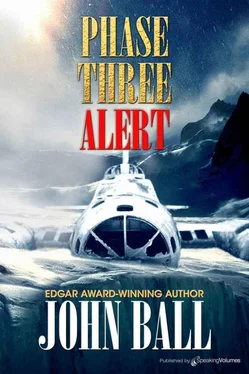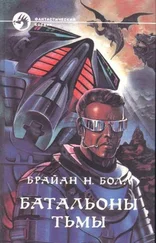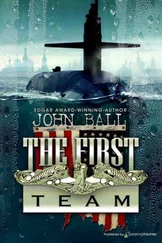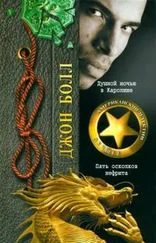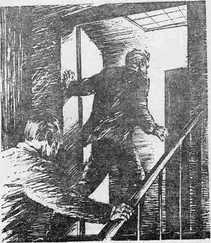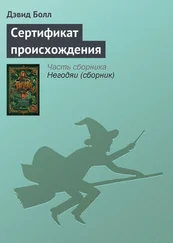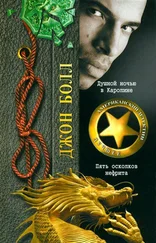Above the noise in the room the PA system came on. Enough quiet fell to hear what was said: another Phase Alert had been declared.
No one heeded it; more beer was called for. The waiters tried to clear away the plates and succeeded in part; as one of them bent across the table he was solidly goosed by a leering street character who roared at his discomfort. The waiter acted out his indignation, playing his part in the grand farce. The dessert was on a cart, ready to be brought in, but first attention was given to keeping the wine glasses full. Hardly anyone sat still in his chair; the abandonment seized hold of everyone and wild shouting again filled the room. Then one of the men picked up a hubcap, banged on it to be heard over the din, and when he had attracted everyone’s attention, he called on the colonel to unveil the portrait.
“Come on,” the speaker urged, “let’s see the best goddamned airplane that ever was! One of them brought my father back with six dead men along with him.”
“Was he alive?” someone shouted back.
“Well what the hell, I’m here!”
The club manager came in as the colonel rose to make his speech. The manager located Major Kimsey with some difficulty and bent over him for a few moments. Kimsey got up and left the room.
The colonel fought his way up to the end of the room, prepared to do his duty. At last he stood by the painting and waited for the room to quiet down enough so that he could speak. He had some quips that were well suited to the moment; as he stood by the covered picture he did so in anything but a military manner. A glass of wine was in his left hand.
“Gentlemen,” he shouted, “—if there’s anyone here who answers that description…”
A loud laugh echoed him; the Pharaohs jumped to their feet — insulted and outraged. The hubcap was banged again to restore order.
Major Kimsey came back into the room and, putting his fingers to his lips, gave a loud whistle. It cut through the other noise of the party and commanded attention. When he got it, he had dropped his role and was suddenly a field-grade officer. There was an abrupt silence.
“We have an emergency medevac,” he said. “Dr. Pedersen radioed from Kanak. He has a Greenlander girl who’s been attacked by dogs and needs hospitalization immediately. It’s marginal because we’ve got a Phase Alert on. Our only chance is to go now.”
With the abruptness of a thunderclap the party was over. The Pharaohs vanished and the pilots of Det. 4 hurried as quickly as they could from the room. Major Valen was with them; the medical officers were immediately behind.
In less than a minute the room was empty — the painting still covered on its easel, the desserts unserved.
Major Mulder was on the telephone, calling for transportation. Captain Bowditch, the surgeon, was on another line to the hospital. A wild idea hit Scott Ferguson; he grabbed Mike Turner and asked, “What kind of a landing strip do they have up there?”
“A helipad, that’s all. No runway.”
“The C-130 won’t help?”
“Can’t use it.”
In the lobby the flying jackets were being quickly reversed. A six-pack pulled up outside and it was filled almost immediately. Another was directly behind it. In a matter of seconds all of Det. 4 was gone; in the second truck, Scott Ferguson rode along, hoping that in some possible way he could help. The colonel offered to drop Captain Markley, the internist, and the surgeon at the hospital.
As the first of the six-packs unloaded at the Det. 4 hangar, another pulled up with a contingent of the NCO’s. No time was wasted in unnecessary conversation; Major Mulder went inside immediately and phoned Weather. “How bad is it now and how much time do we have?” he asked.
A staff car taxi pulled up and Major Linda Dashner, one of the three nurses at Thule, unloaded her flight gear and a medical kit. “I didn’t have time to dress,” she explained as soon as she was inside. “I’ll do it here.”
Woody Kimsey gave her a few seconds. “No dice. This is going to be very tough and we may not be able to get there at all if it gets any worse.”
The major shed her parka. “I’m coming,” she declared, and began to get into her flying suit.
Kimsey went quickly into the main hangar bay where Tiny Heneveld met him at the number one aircraft. “Are we going?” Heneveld asked. It was less a question than an urging.
“We’re going to try,” Kimsey answered.
Det. 4 was at full strength within five minutes. Then Kimsey spoke quickly and precisely to the other officers of his command. “Here it is: Jolly One will depart ASAP. Dick, you cock number two and keep in communication. Be ready to pick up the mission, if you can, if we run into trouble. The weather is right on edge — we may not be able to make it.”
“The chances will be better if we both go,” Mulder countered.
Kimsey shook his head. “You might have to come and get us — we don’t want to have to divert to get you. But give us full back up, please.” He saw over his shoulder that the number one helicopter was being pushed forward as the main hangar door began to open. “Any more information?” he asked.
An NCO was there with the answer. “Yes, sir. The girl is eight years old. She was out with her father feeding the dogs when she apparently tripped and fell down. As soon as she was prone the dogs jumped her. She’s been bitten and lacerated. Dr. Pedersen says that her only chance is to get her into the hospital as quickly as possible.”
“Any weather from Kanak?”
“Yes, sir — very tough. Ole, the Dane in charge there, advises extreme care. He didn’t tell us not to come.”
“He couldn’t,” the major answered. “All right, let’s go.”
Although winter was yet to come, the Arctic was already showing its strength in the winds that whipped across the ramp and in the whirling mists of early snow that cut visibility to a few yards. It was fully dark as Forest Kimsey, seated behind the controls of Jolly One, began the complicated checklist.
He was interrupted briefly once by the flight mechanic, who reported that Lieutenant Ferguson was ready in flight gear and asking to come along. “Why?” Kimsey asked.
Ferguson, who already had a headset on, answered for himself. “I can make a hand, and help the flight nurse. On this one it might be useful.”
That was true and Ferguson knew the risks; he was an experienced pilot fully familiar with Arctic conditions. “All right,” Kimsey said and then returned to checking out his own aircraft. He had firm doubts that he would be able to make it to Kanak, but he was determined to try. In the rescue business the safety of aircraft and their crews was always secondary to the mission of saving human life — the ARRS PJ’s were living proof of that. He himself had often been moved by those men and the work that they did. Expert parachutists and scuba divers, they were prepared at any time to jump under any conditions whatsoever to save anyone. Their heroism was legendary.
“Checklist complete,” Seligman reported.
Seconds later the first of the big Sikorsky’s turbines began to come to life. As it caught hold, ground personnel on signal pushed the aircraft out onto the ramp and into the blast of the wind. The second turbine fired up, then the overhead main rotor began to turn. As it picked up speed the helicopter rocked on its gear, resisting the wind that challenged its right to even attempt to fly. As soon as the hangar door closed behind it, it was black in every direction; the field lights were on, but they were all but invisible.
Major Kimsey made an immediate decision not to follow usual procedure and go to the end of the runway for takeoff — the ground gusts were much too strong for that. He nodded to Seligman, who called the tower and asked for immediate takeoff from where they were. It was a useless formality; nothing else would be in the air for hundreds of miles in any direction. The tower gave permission, but warned that Phase One might be declared at any moment.
Читать дальше
